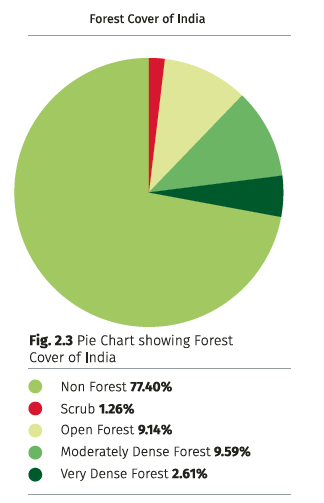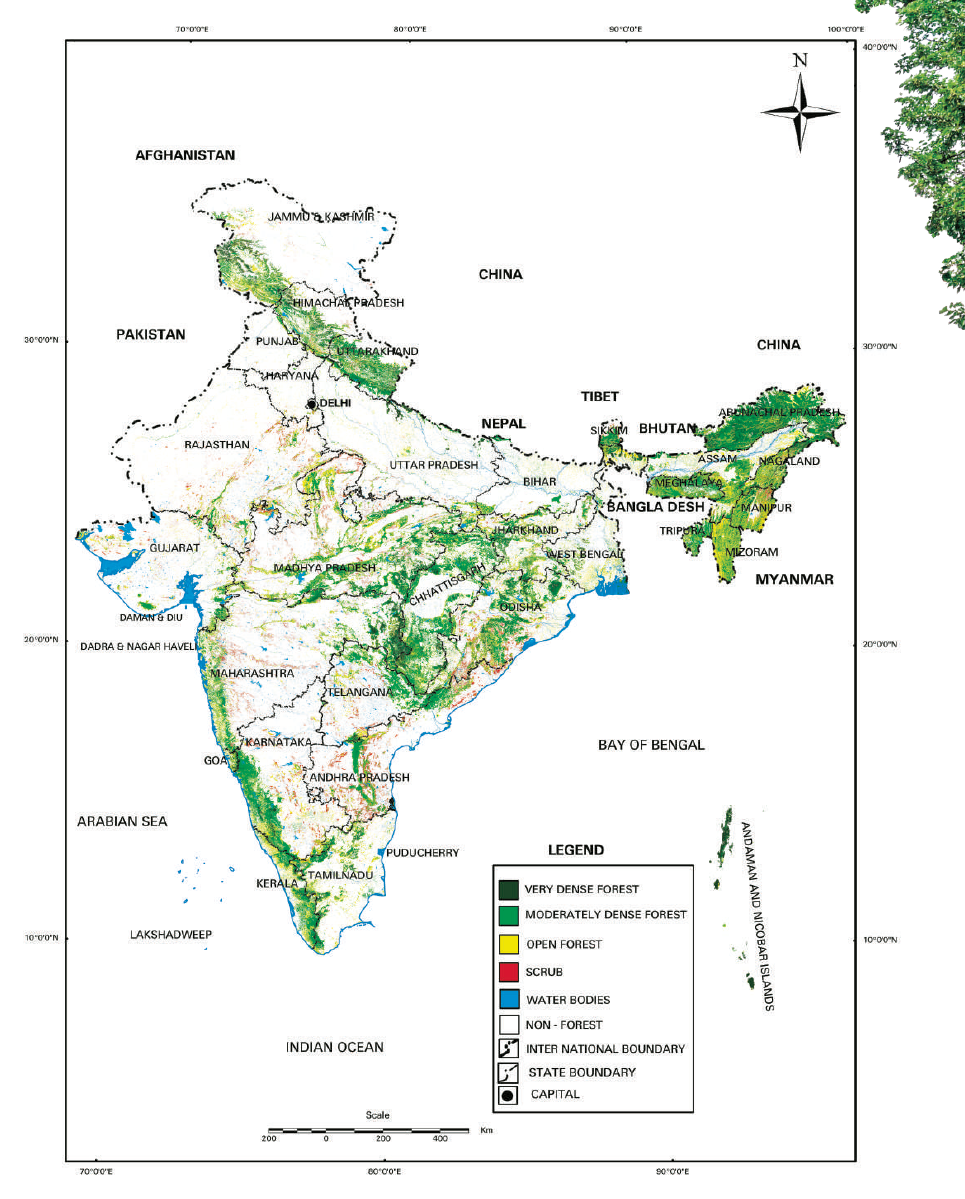Vegetation in the Himalayas:
The Himalayan ranges show a succession of vegetation from the tropical to the tundra, which changes with altitude. When we look at the vegetational zones, the eastern Himalayas are similar to the western Himalayas.
But on the whole, the eastern Himalayas have more tropical elements, a greater variety of Oaks and Rhododendrons and less of conifers than the western Himalayas.
Some other differences are:
- The higher rainfall and warmer conditions in this part of the Himalayas.
- Also, the tree line and the snow line are higher in the eastern Himalayas than the corresponding lines in the western Himalayas (Recall the discussion on snowline? Click here to quickly revise!).
- Species diversity and vegetation density are also higher in the East.
Also, the southern slopes of the Himalayas carry a thicker vegetation cover because of relatively higher precipitation than the drier north-facing slopes.
Some other ways of classifying forests:
1. Classification according to composition:
- Coniferous Forests: These are temperate forests occupying about 6.50% of the total forest area of the country. These are confined to the Himalayan ranges and provide soft wood timber.
- Broad-Leaved Forests: These are tropical and subtropical monsoon forests. These are widely spread and cover 94% of the total forest area of the country. These are found in the plains, plateaus and mountainous areas of the country. Sal, Teak and Bamboo are important varieties.
2. Legal or Administrative Classification:
Broadly speaking, reserved, protected and unclassed are the three major legal classes of forest in India. A legal notification in a government gazette under Indian Forest Act creates or defines the boundaries of “reserved and “protected” forests in India. These forests by definition are owned by government. The rest of forests areas or waste land or any other land “recorded” in land records as “forest” but not notified in government gazette as “reserved” or “protected” forests under Indian Forest Act, are called unclassed forests. The status of their ownership and control varies among various States in India.
- Reserved Forests:
- These forests are under the direct supervision of the government and no public entry is allowed for the collection of timber or grazing of cattle.
- About 53 % of total forest area falls in this category.
- Reserved forests are regarded as the most valuable as far as the conservation of forests and wildlife is concerned.
- In such forests, most of the activities are prohibited unless allowed.
- Protected Forests:
- These forests are looked after by the government but the local people are allowed to collect fuelwood/timber and graze their cattle without causing serious damage to the forests.
- These occupy 29% of the total forest area of the country.
- In such forests, most of the activities are allowed unless prohibited.
- Unclassed/Unclassified Forests:
- There is no restriction on cutting of trees and cattle grazing.
- These occupy 18% of the total forest area of the country.
- These are the other forests and wastelands belonging to both government and private individuals and communities.
- All north-eastern states and parts of Gujarat have a very high percentage of their forests as unclassed forests managed by local communities.
Reserved and protected forests are referred to as permanent forest estates because they are maintained for the purpose of producing timber and other forest produce, and for protective reasons
3. The Forest Survey of India classifies forest cover in 4 classes:
- Very Dense forest: All lands with tree cover (including mangrove cover) of canopy density of 70% and above.
- Moderately dense forest: All lands with tree cover (including mangrove cover) of canopy density between 40% and 70%.
- Open forests: All lands with tree cover (including mangrove cover) of canopy density between 10% and 40%.
- Scrubs: All forest lands with poor tree growth mainly of small or stunted trees having canopy density less than 10%
The moderately dense and very dense forests are called Prime forests. Non-Forests are the lands not included in any of the above classes.

Forest Cover in India:
According to the India State of Forest Report 2015, forests cover 21.34% of the total geographical area of the country (Road more about the report here!).
Some other facts:
- Out of the total forest cover, the maximum share is of Moderate Dense Forests, followed by Open Forests.
- Also, Madhya Pradesh has the largest total forest cover, followed by Arunachal Pradesh and Chhattisgarh.
- Mizoram, with 88.93 % of forest cover has the highest forest cover in percentage terms, followed by Lakshadweep.


The Problems of Indian Forestry:
The specific problems of the Indian Forestry are the following:
1. Low Forest Cover
The forest cover in India is only 21.34% against the world average of about 35% and the stipulated 33% under the National Forest Policy 1952. The states of Punjab, Haryana and Rajasthan have less than 5% of their areas under forests. Forest area is decreasing due to deforestation on account of:
- Growing demand for agricultural land.
- Urbanisation and industrialisation
- Construction of multipurpose projects
- Commercial activities like mining, quarrying, oil extraction, orchard development etc.
- Shifting cultivation – Increasing pressure of population has reduced the jhum cycle to only 5 years in many parts of Nagaland, Meghalaya, Mizoram, Tripura and Manipur. Consequently, the forests do not have sufficient time to regenerate.
- Overgrazing by cattle
- Transhumance i.e. seasonal migration by nomadic tribes up and down the mountains.
2. Uneconomic utilisation of forests:
- Most of the forests are not gregarious i.e. usable plants not growing close enough. This creates a problem in their exploitation.
- 40% of the total forest area is inaccessible.
- Lumbering, transport and sawing of timber is still done by primitive techniques.
- Lack of scientific techniques of growing forests as in Canada, Russia. Only natural growth of forests takes place in India
3. Forest Fires – Natural and manmade.
4. Plant diseases, pests, insects

